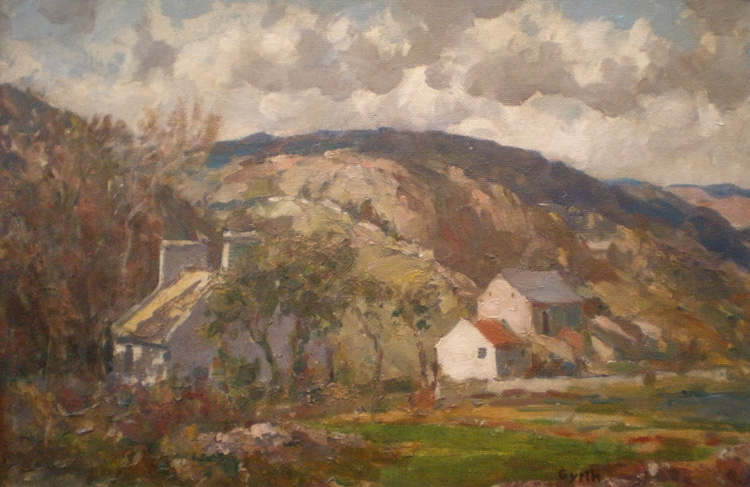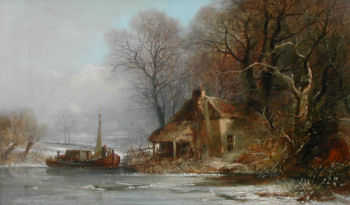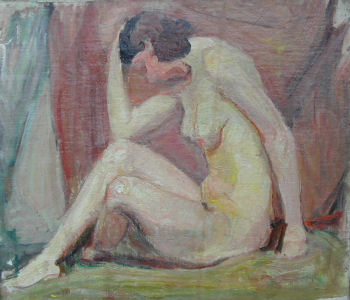Oil on Board, 76x56cm.
Russell R.B.A., R.I., R.O.I., R.S.M.A. 1892-1970
Gyrth Russell was born in Halifax, Nova Scotia in April 1892, the last of eight children. His father, a canadian M.P., was also Supreme High Court Judge for Nova Scotia. At the age of fourteen, Gyrth began his artistic career at Halifax School of Art, and quickly graduated to the School of Art at Boston Mass’. His first job was as a draughtsman in the Public Works Department of Canade, in Halifax. It was during this period he saw and sketched the cable ship ‘Mackay Bennett’ returning to her Halifax Station, her decks piled high with coffins containing bodies found after the Titanic disaster.
In 1911 Gyrth left Canada to study at the Academie Julian and Academie Calorossi in Paris. At the outbreak of War, Gyrth left France for London where he was commissioned, under the command of Lord Beaverbrook, as an official War Artist for the Canadian Sector, and spent most of 1918 in Northern France painting the ravaged landscapes. During the course of the First World War he worked with amongst others, Augustus John, Orpen and Frank Brangwyn. Between the wars Gyrth earned his living as an artist in film studios, designing Railway posters, lecturing and writing. During this time he was elected to membership of the R.B.A., R.I., R.O.I., and the R.S.M.A., as well as being an active member of the Langham Sketchclub.
In 1944, bombed out of London, Gyrth moved to Yorkshire, where apart from continuing his work as an artist, he became a regular visiting lecturer at Doncaster School of Art. In 1953 he moved for the last time, to Penarth in South Wales, where he continued to work until his death in December 1970. Whilst in South Wales his talents as an artist and a lecturer were as much in demand as ever. He became an active member of both the Watercolour Society of Wales and the South Wales Art Society.
Gyrth Russell was a prolific and talented artist whose works were much more sought after during his lifetime and have become increasingly more so since his death.






